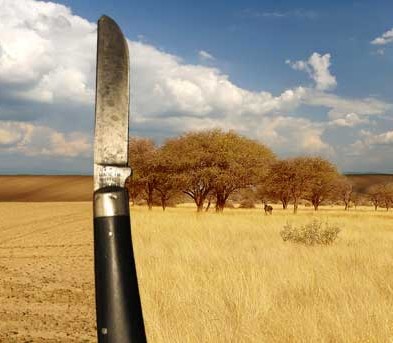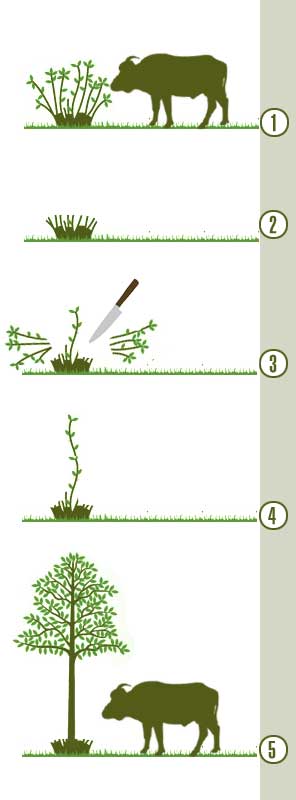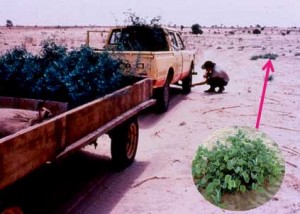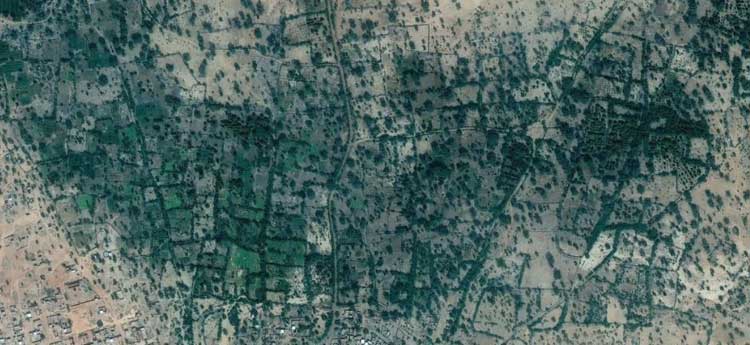How a $2 Pocket Knife is ReGreening Africa
How can barren fields, degraded forests and grazing lands be reforested without planting a single tree? Is it possible? Well yes, according to Tony Rinaudo and his work with World Vision in regenerating over 30,000 acres in West Africa all with the aid of just a simple pocket knife and a clever idea.
In the Niger it is estimated 60 million trees were planted from nurseries over 20 year period with less than a 25% survival rate.
Tony Rinaudo wondered what to do to help give trees a chance of surviving in this desolate location.
“I felt very discouraged. I looked North, South, East, West – and thought, using this nursery and tree planting technique, at this rate – it was impossible to revegetate the land on a large enough scale to make an impact.
“How many million dollars would I need? How many staff would I need? How many decades would it take?” he asked.
“I prayed and asked God to open my eyes and to show me what to do.”
One day Tony Rinaudo noticed that many of the ground shrubs were actually trees could not regenerate because they were heavily overgrazed in many areas of Africa.
The shrubs and trees were literally eaten down to the stump by grazing animals (figure 2).
Farmers in the area had also cleared a lot of the trees for firewood so Tony was faced with the issue of turning this problem into a solution.
His solution was clever and simple.
Using a cheap cutting instrument, a machete, hatchet or even a cheap pocket knife, Tony Rinaudo taught the local farmers to cut all the side lateral growth of the heavily pruned tree (figure 3) and use the coppiced timber for wood heating but to only leave one central stem on the plant to grow straight up (figure 4).
The plant puts it’s remaining energy into this solitary trunk enables the plant to grow vertically rapidly.
Encouraging the farmer to keep their animals from nibbling the tree of 6 months enables the tree to rapidly put on height, well out of the range of the grazing animal.
This very simple process has had a dramatic response on the African landscape.
Crop yields have increase from 300-500 Kg/ha – to 1000 – 1500 Kgs/ha. By coppicing their trees instead of cutting them down, local farmers have increased access to straw and firewood.
“Within three years, farmers were managing trees on their land sustainably.” says Tony, “Soil fertility increased, soil structure improved, and hence crop yields. There was greater moisture infiltration and retention in the soils. Farmers began to see trees as a sustainable cash crop in their own right.”
Permaculture teacher Geoff Lawton says that Tony Rinaudo has managed to lift the output of grain production by 500,000 tonnes in Niger using this simple technique.
“You’ve got shade. You’ve got less evaporation from wind,” says Lawton, “You got organic matter.The little stems they cut off they use for fuel like a rocket stoves.”
“The man needs a Nobel prize for that one I reckon!” says Lawton. “Its often those simple little ideas that work best.”
The Drip Line
Geoff Lawton explains that a desert is an environment where the evaporation rate is much higher than the rainfall.
“If those areas are deforested.” he says “If the forest is removed from these marginal areas, they become the extension of desert.”
“The reason for that is the condensation or the drip-line from the trees.”
“The drip-line condensation can equal up to 80% of the rainfall that would normally hit that soil.” says Lawton.
“At any cost, you have to cover the soil.” says Lawton. “You must plant the hardiest of species trees. It doesn’t matter what they are. You have to plant these pioneer trees to retain moisture in the soil. You’re adding shade, wind-breaks and some organic matter and moisture into the soil. Your refinements can come later.”
In twenty years, over 20 million hectares have been reforested through Tony’s Rinaudo’s Farm Management Natural Regenerative system in Niger.
Governments spend billions on trying to solve these problems. Tony has done it simply with a pocket knife.












what about putting a GoogleMap link, so we can see where it is located and make sure that the picture has not been altered? Furthermore it would allow us to compare the area with the surrounding area and evaluate the effort made by Tony and the real results.
Craig Mackintosh from the Permaculture Research Institute has posted a great story and some before and after pictures at:
http://permaculture.org.au/2012/06/28/hope-for-a-new-era-before-after-examples-of-permaculture-earth-restoration-solving-our-problems-from-the-ground-up/#more-7638
Regarding the Google Earth sat image. Open Google Earth and do a search for “Tahoua Niger.” The app will fly you to the relevant location. Save the image and date it. Hopefully Google will update their satellite imagery soon.
It’s funny considering a tool as simple as the pocket knife is illegal in most of Australia.